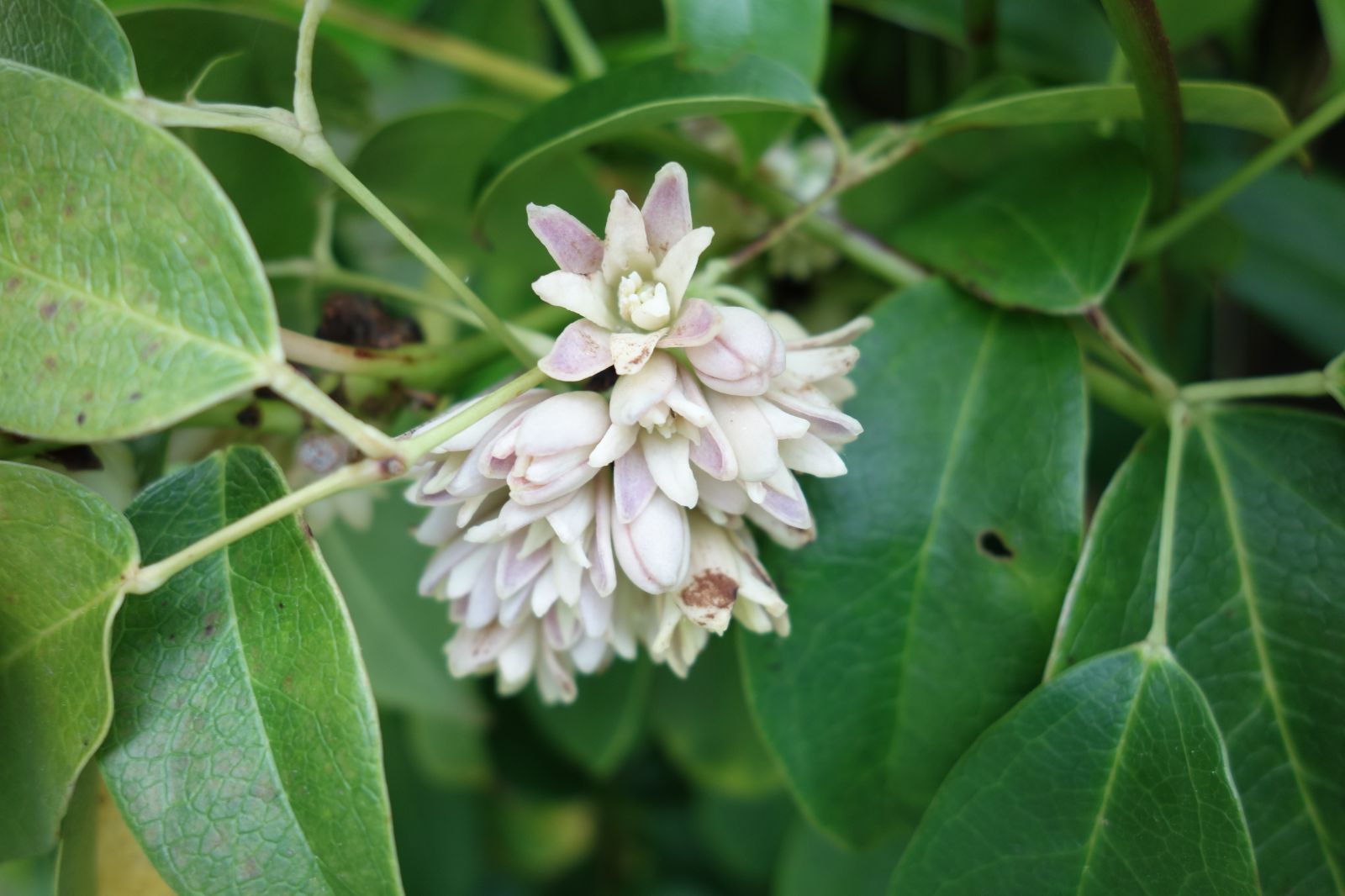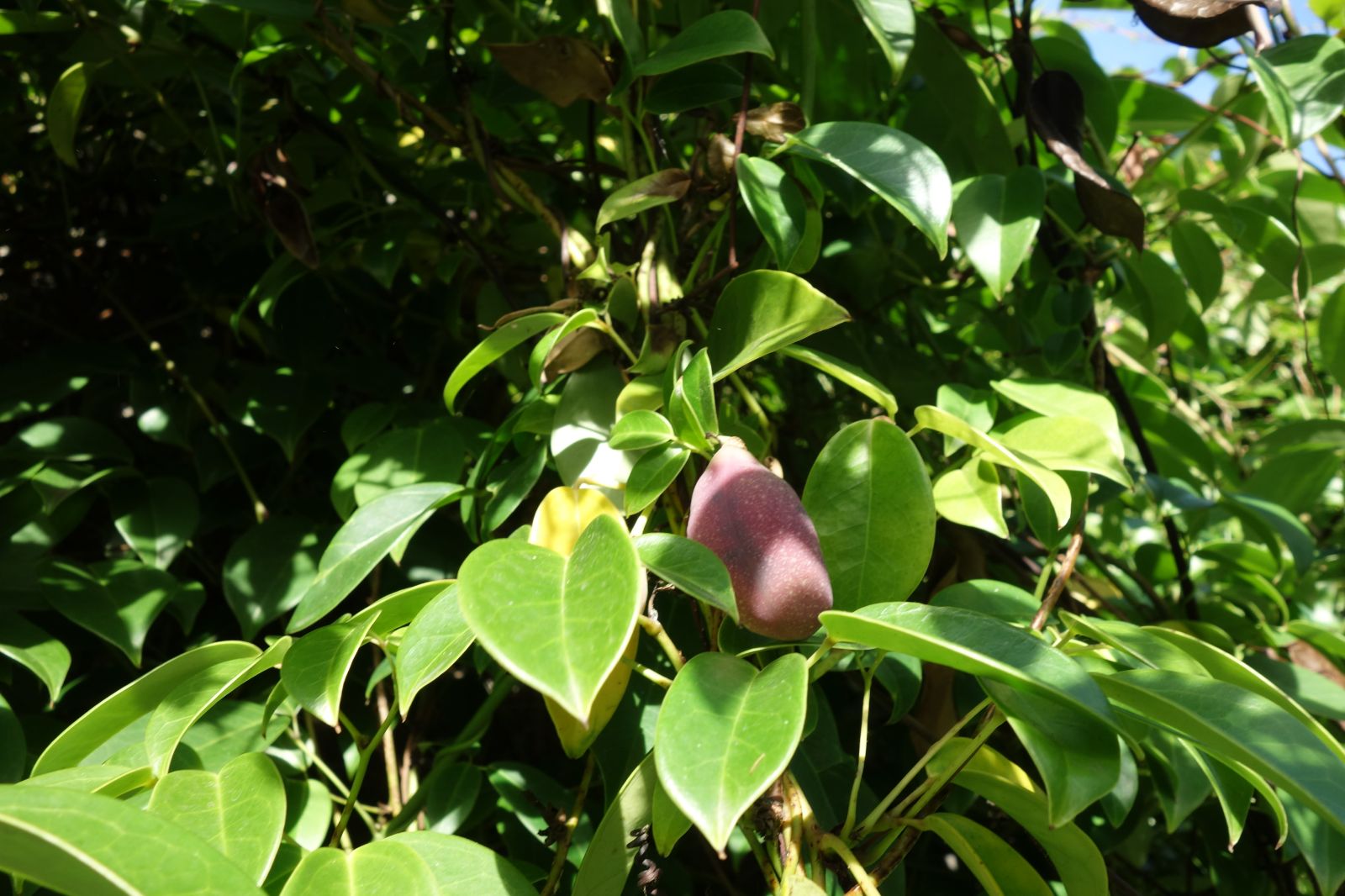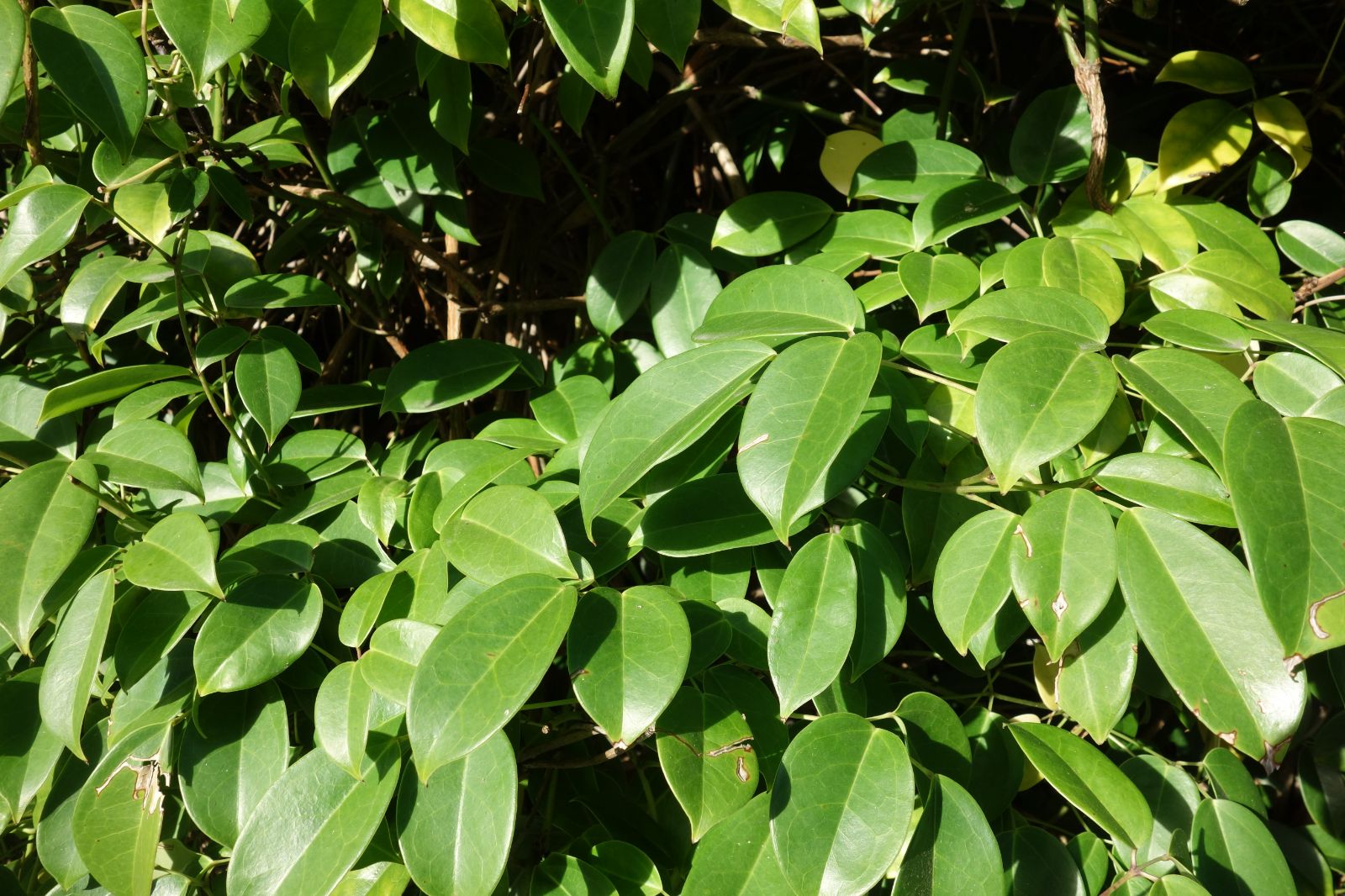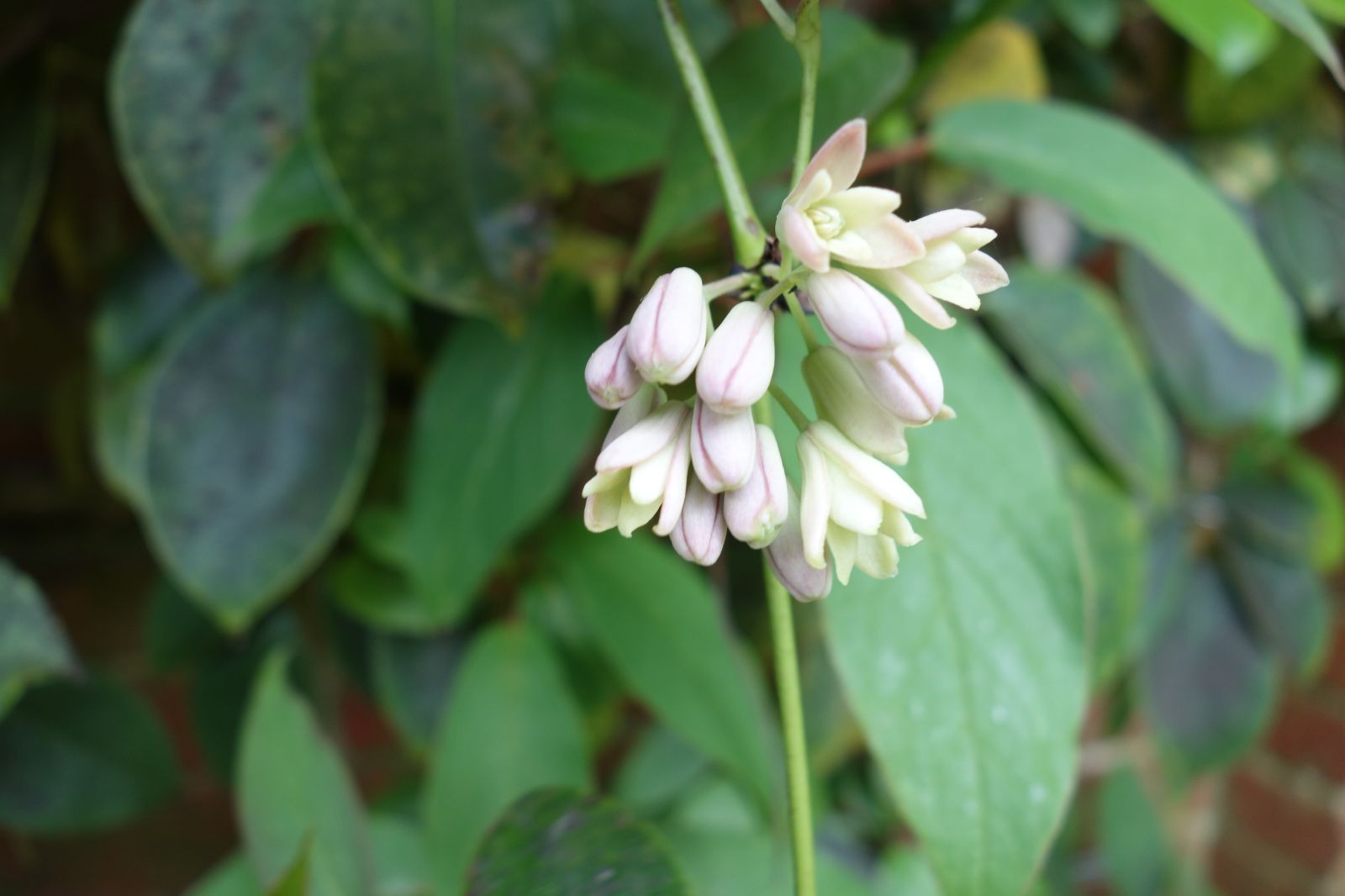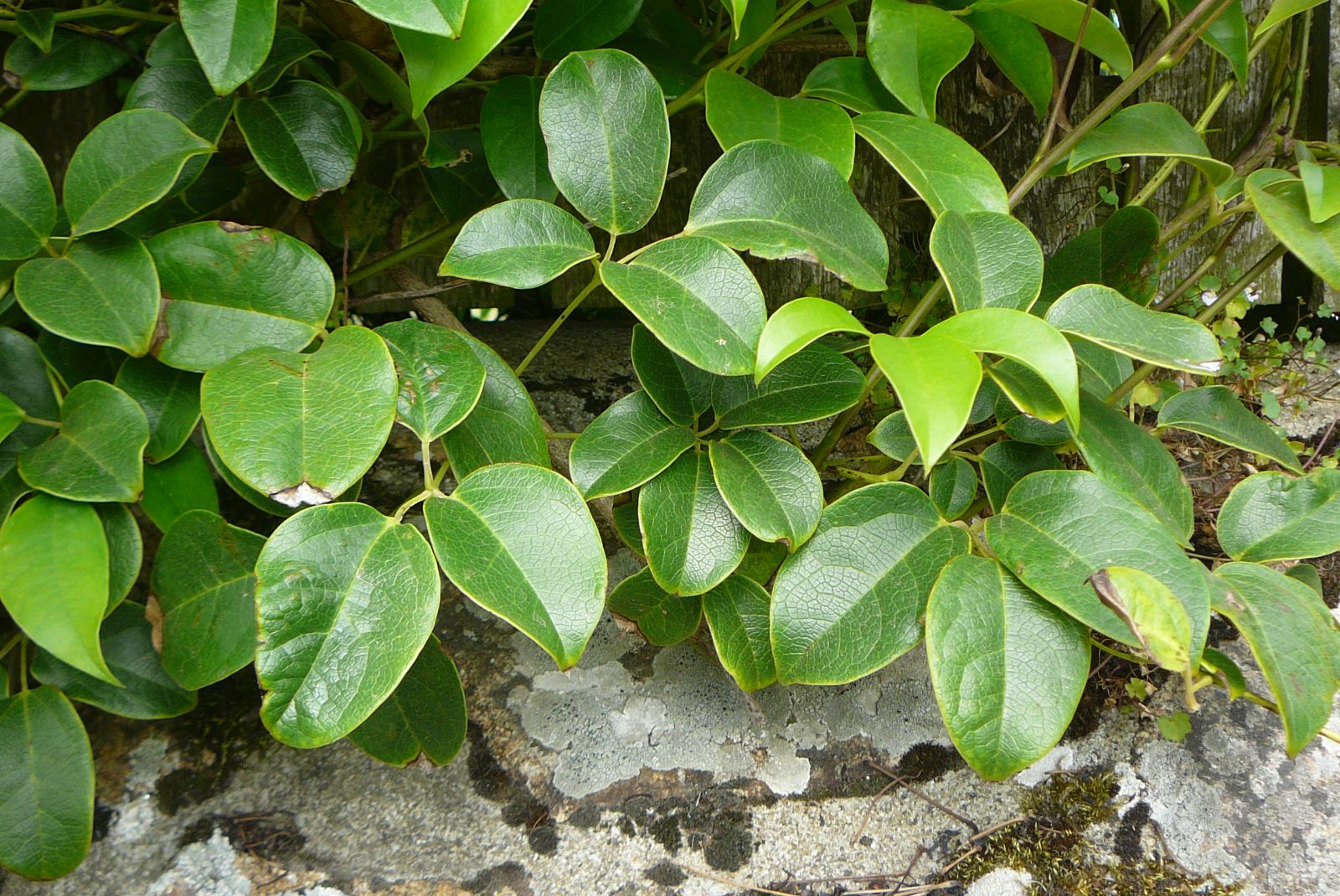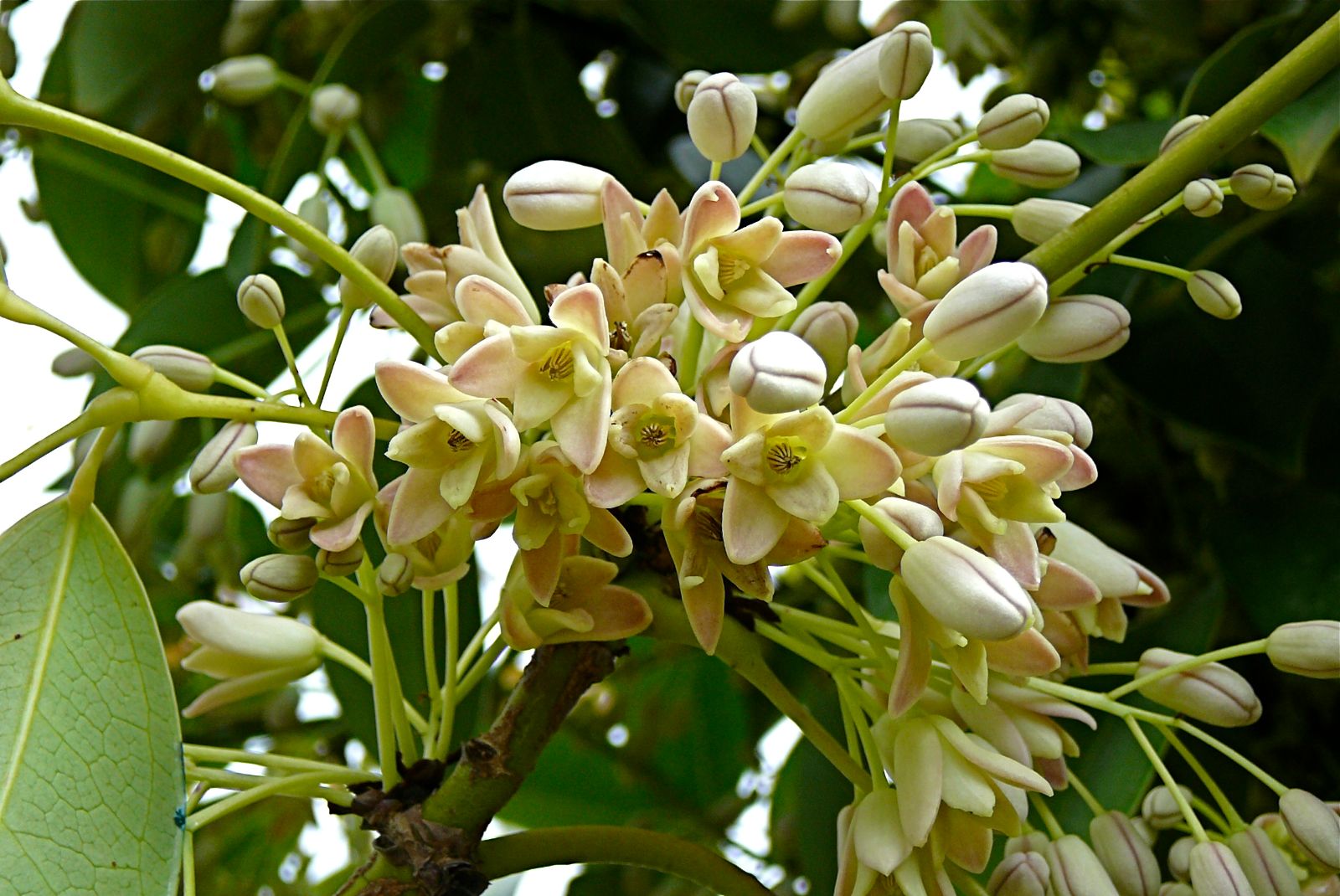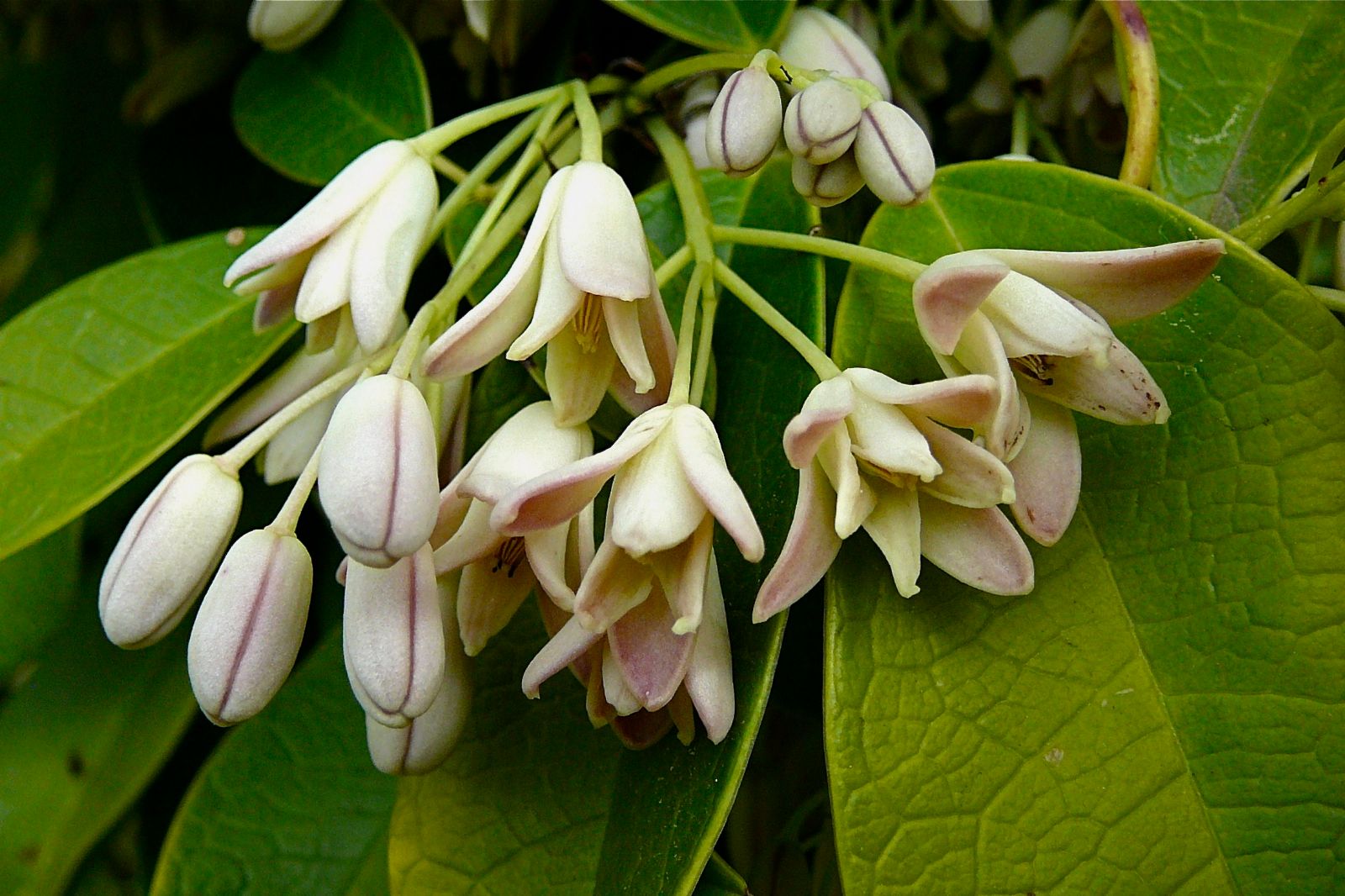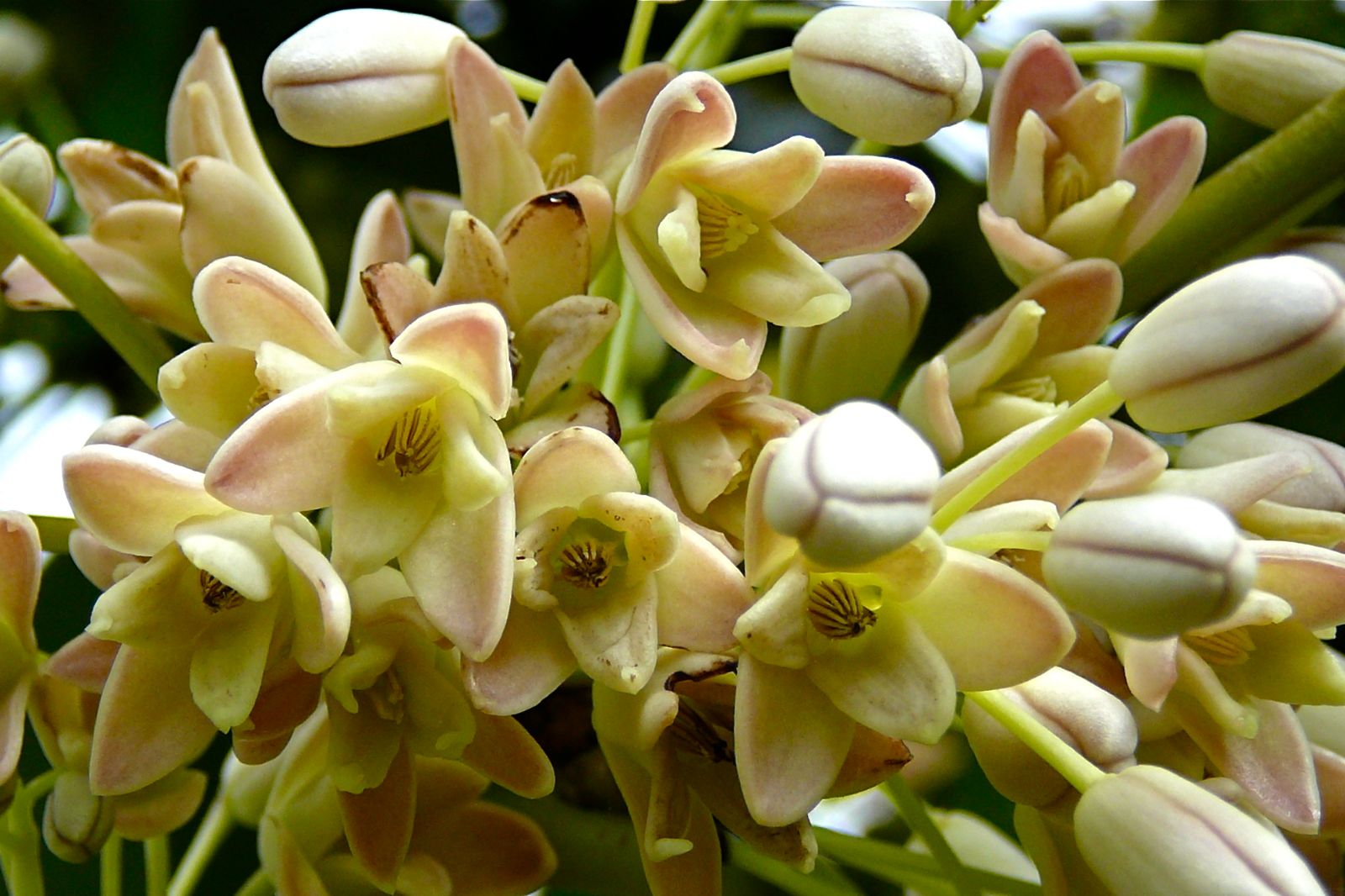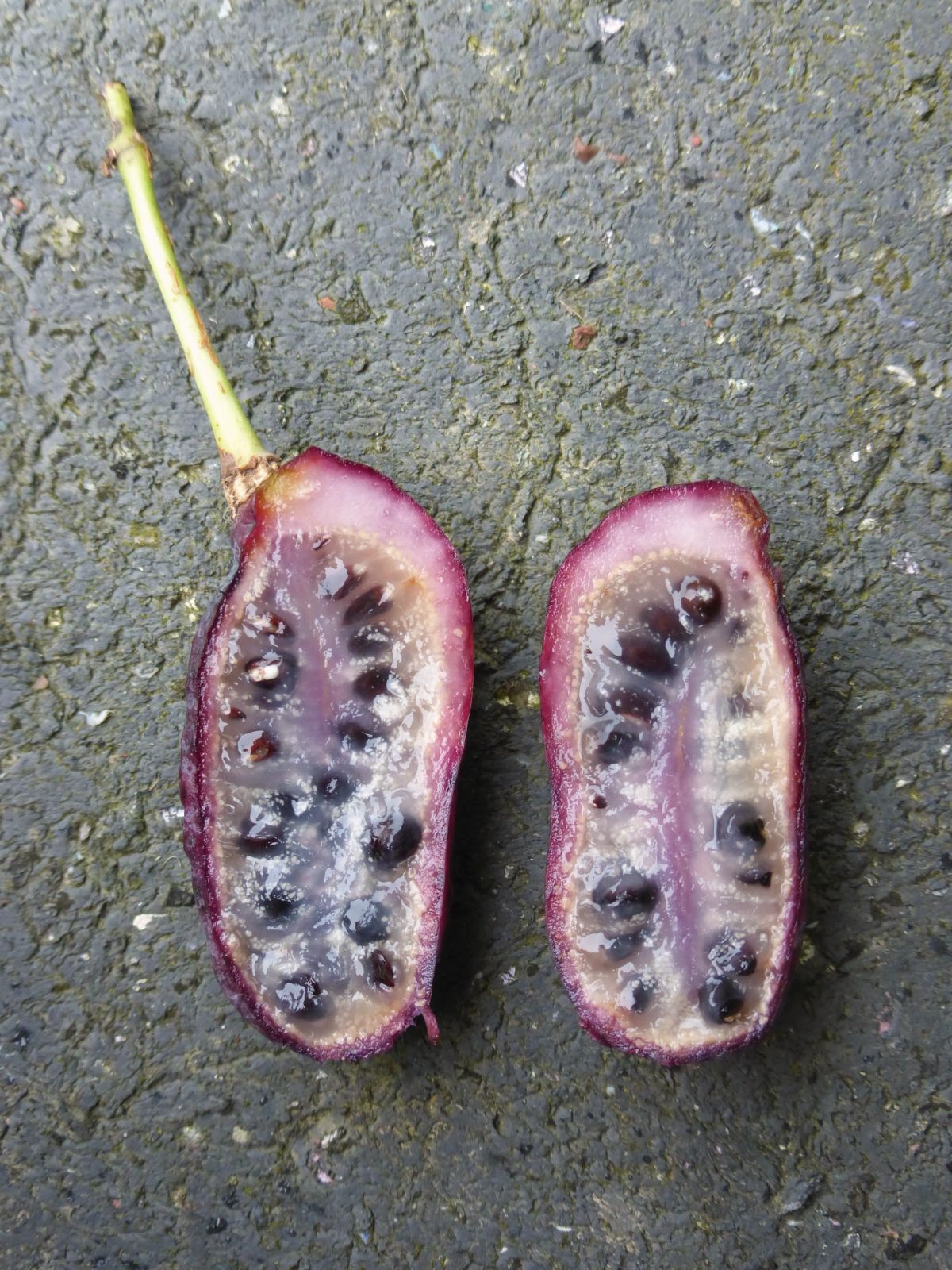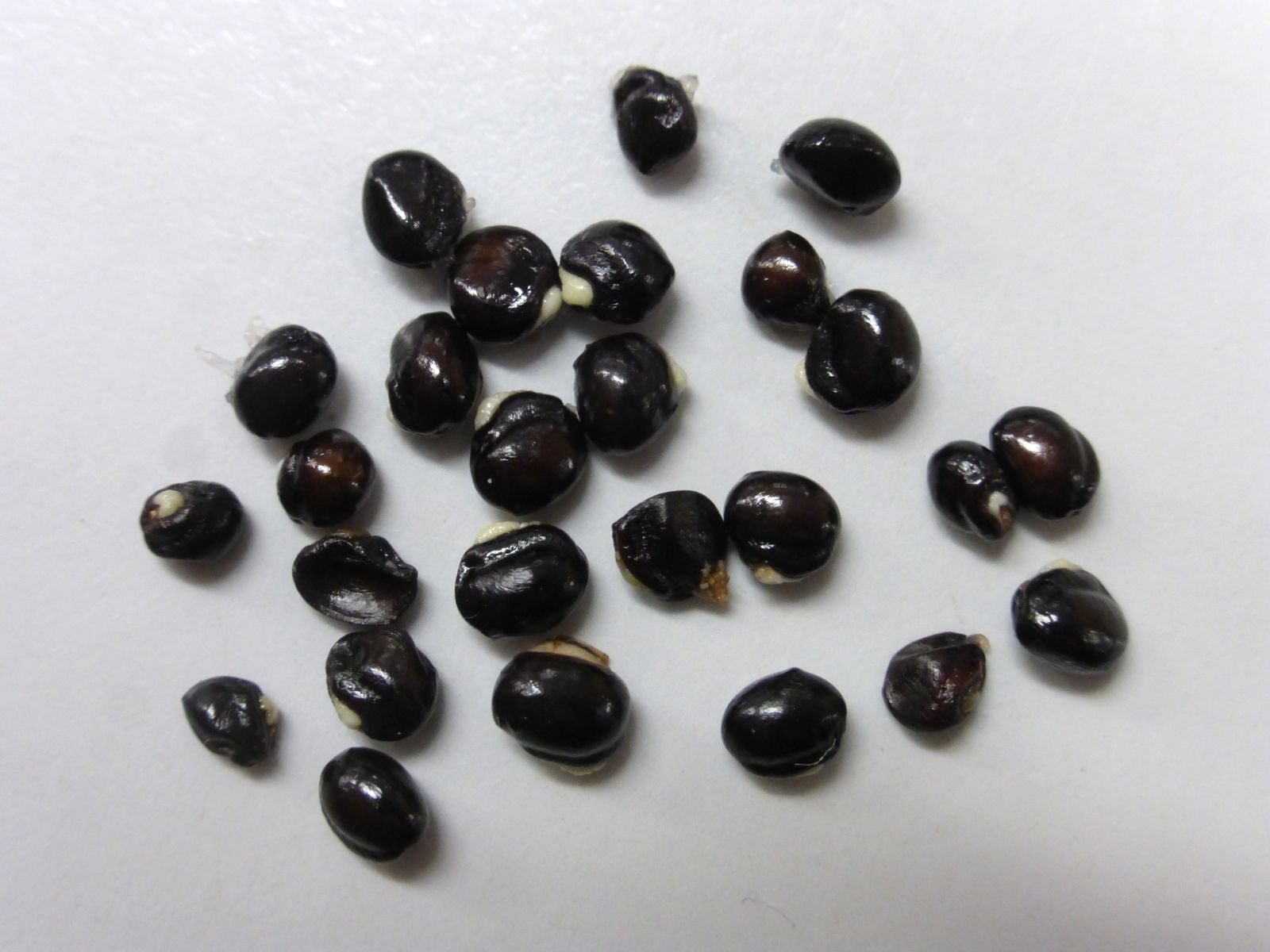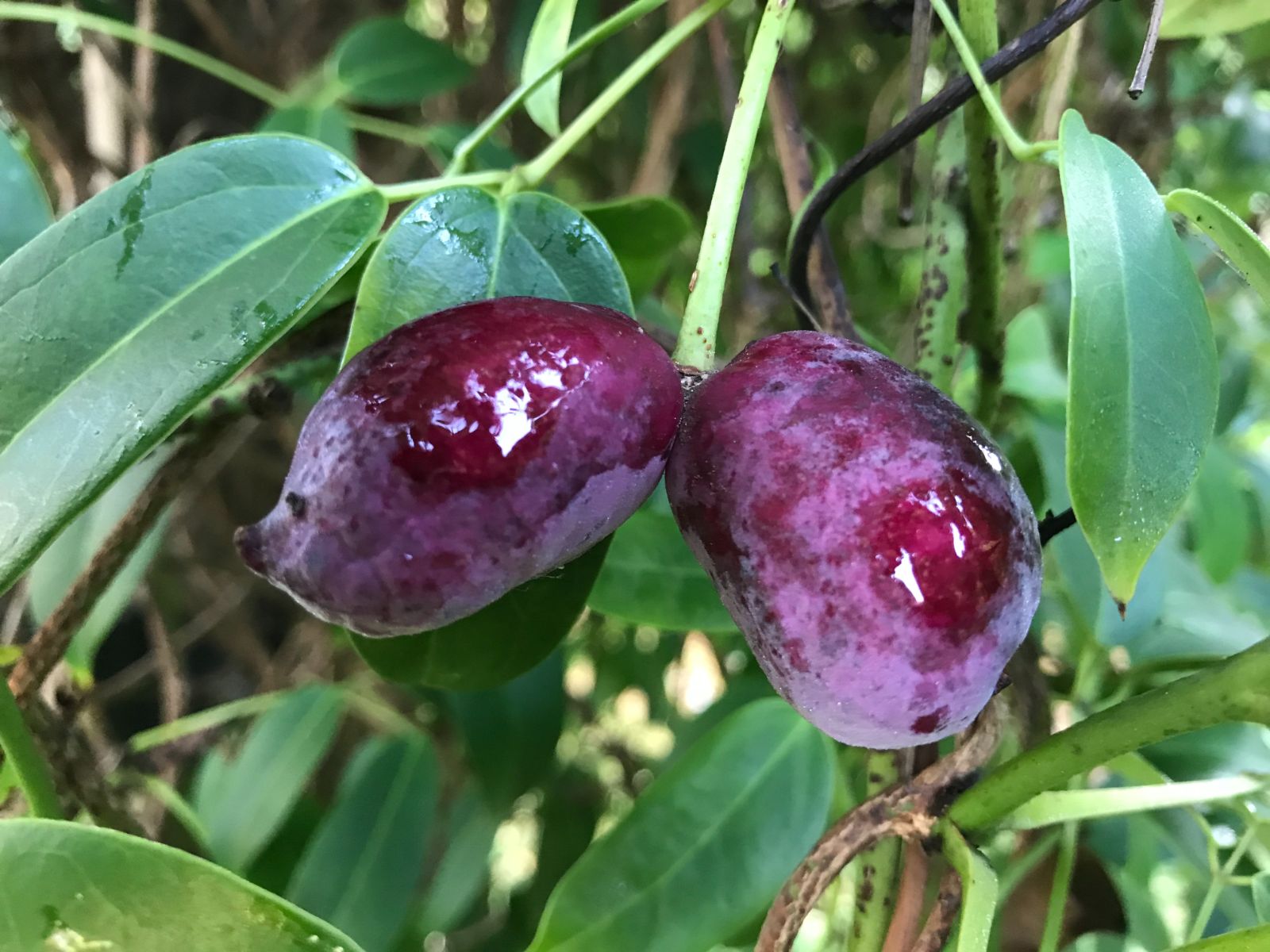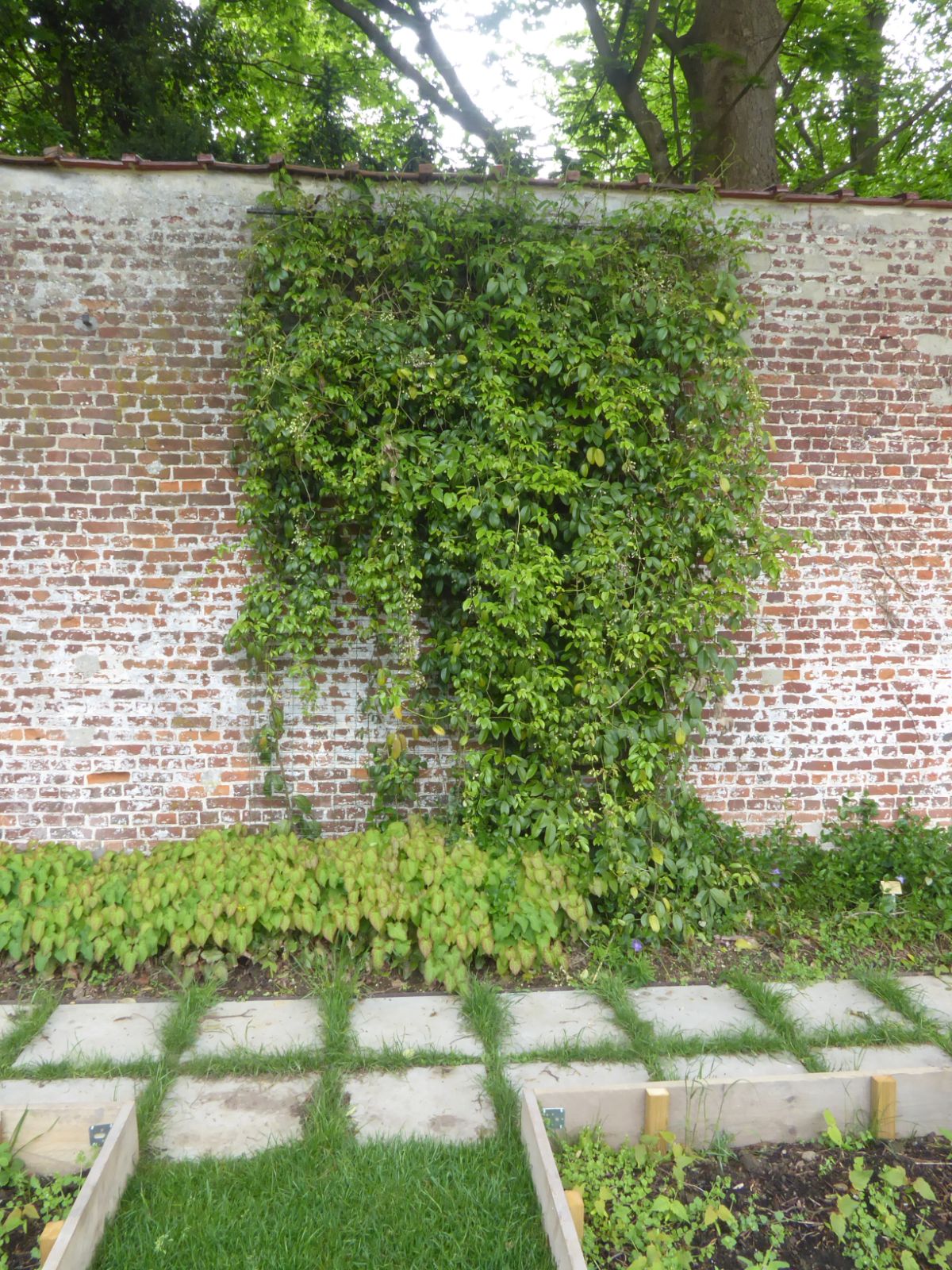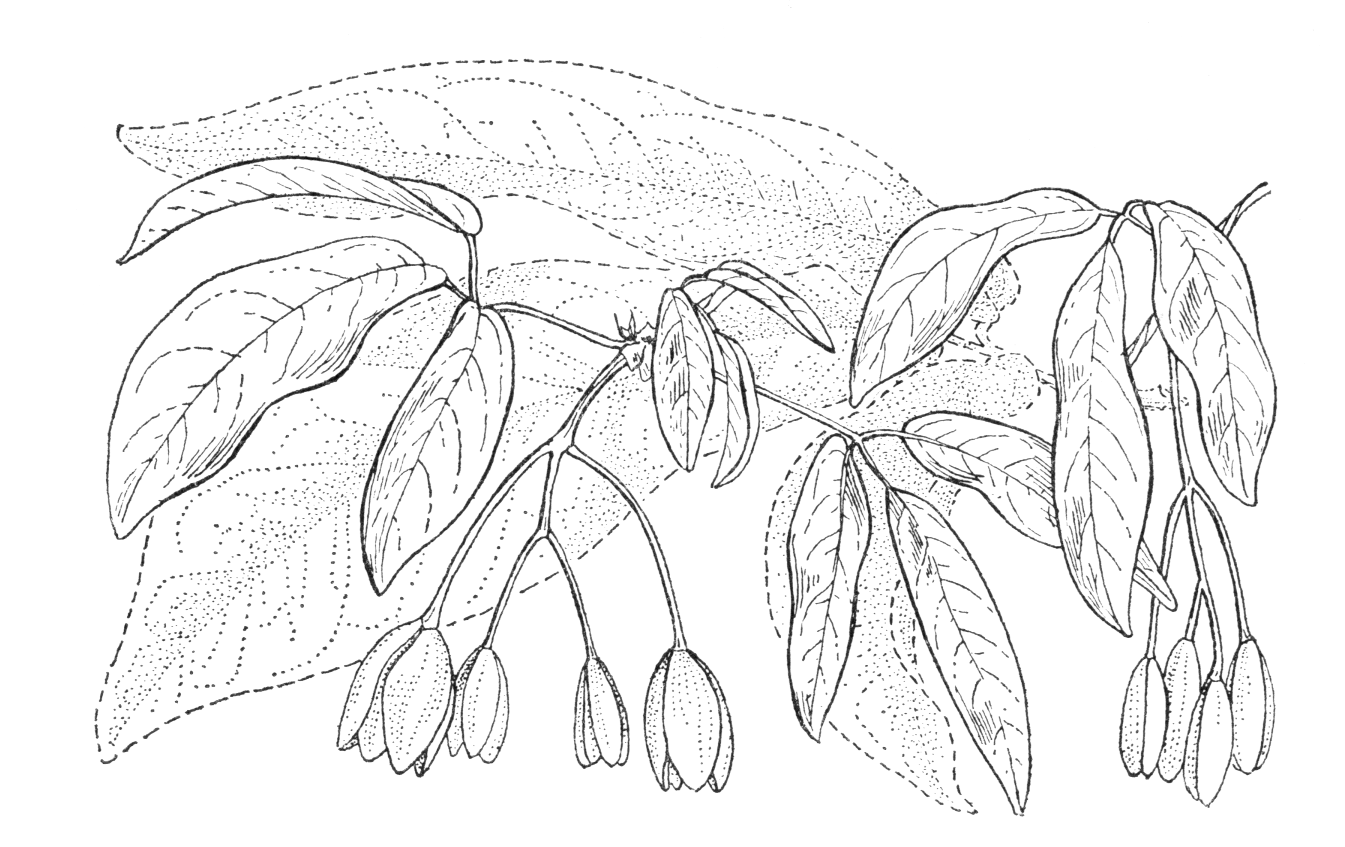Holboellia coriacea
Credits
Article from Bean's Trees and Shrubs Hardy in the British Isles
Recommended citation
'Holboellia coriacea' from the website Trees and Shrubs Online (treesandshrubsonline.
Genus
Other taxa in genus
A vigorous evergreen climber growing, according to Wilson, 20 ft high in the wild, but apparently capable of becoming much taller under cultivation; young shoots twining, ribbed, purplish, and, like the leaves and flower-stalks, quite glabrous. Leaves composed of three leaflets borne on a common stalk 11⁄2 to 31⁄2 in. long, each leaflet having its own stalk 1⁄4 to 1 in. long. Leaflets 21⁄2 to 6 in. long, 1 to 3 in. wide, the middle one the largest and longest-stalked, oval or oblong inclined to obovate and usually widest towards the pointed apex, rounded at the base, side leaflets ovate to lanceolate, all three dark glossy green, leathery, and conspicuously veined beneath. Male flowers scarcely 1⁄2 in. long; sepals erect, white, oblong, 1⁄8 in. wide, stamens with pale purple stalks scarcely longer than the anthers. The male flowers are produced in a group of corymbs at the end of the previous year’s growth or in the leaf-axils, the whole making a cluster of blossom 3 in. long and 4 in. wide. Female flowers produced in corymbs of usually three or four blooms from the axils of the lower leaves of the young shoots. They are rather larger than the males and appear on a main-stalk up to 5 or 6 in. long; sepals fleshy, much paler than the males, greenish white tinged with purple; styles three, erect, cylindrical 1⁄4 in. long. The fleshy fruits are purple, 13⁄4 to 21⁄4 in. or even more long, nearly 1 in. wide. Seeds jet black. Bot. Mag., n.s., t. 447.
Native of Hupeh, China; introduced by Wilson in 1907. It is quite hardy and is vigorous enough to climb into and over a small tree. The description given above was made from a plant which first flowered at Kew in April and May 1921. There is a fine plant on the south facing wall of the General Museum.
H. latifolia Wall. – This species, a native of the Himalaya, was introduced in 1840. It is a luxuriant climber, which thrives exceedingly well in the southwestern counties, but is not reliably hardly nor so vigorous in colder parts. The flowers are exquisitely fragrant. This species is so closely allied to H. coriacea that it is difficult to find any reliable character by which they may be distinguished botanically, except that in H. coriacea the leaflets appear to be constantly three in number against up to seven, but often only three, in H. latifolia. If the two were to be united, it would be under the name. H. latifolia, which has long priority.
Neither species fruits freely in this country but might do so more freely if the female flowers were hand-pollinated. The plant of H. latifolia at Dartington Hall, Devon, occasionally bears fruits.
From the Supplement (Vol. V)
In this species the individual inflorescence may be unisexual or consist of both male and female flowers, the latter at the base of the peduncle but on longer pedicels than the males, so that the inflorescence tends to be corymbose. With regard to the colour of the flowers, according to Wilson’s field notes the males are white and the females purple, while in the cultivated plant portrayed in the Botanical Magazine it is the other way about.
For the fruits of H. coriacea, not shown in the Botanical Magazine, see The Garden (Journ. R.H.S.), Vol. 101, p. 524 (1976), which shows a fruiting plant growing in the former West Hill nursery of Messrs Hillier (where, incidentally, the soil is chalky). In his note Mr Woodland describes the male flowers as purple, the female greeny white.
H. latifolia – A variety of this species is recognised – var. angustifolia (Wall.) Hook. f. & Thorns. (H. angustifolia Wall.), in which the leaflets are narrower than in the typical variety and number seven or nine. The two varieties occur in the same area and, according to Flora of Bhutan, are not separated altitudinally. In H. latifolia (but probably also in some forms of H. coriacea), several corymbose racemes may be produced from a single axil.

